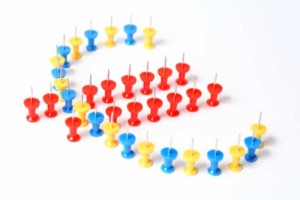 It’s teeth-pulling time for the Eurozone economy…
It’s teeth-pulling time for the Eurozone economy…
And I really don’t know how much longer they can carry on numbing the pain with handouts, rather than dealing with the uncomfortable issue at hand.
The Eurozone economy and the balance of power
In 1923, following the Treaty of Versailles, the French marched into Germany to demand the money they were owed in reparation at the end of the First World War.
The Germans turned on their printed presses and began the cycle of inflation that led to the downfall of the Weimar Republic
This week Paris and Berlin have stormed a march on George Papandreou, the Greek prime minister. He has promised Nicolas Sarkozy and Angela Merkel to impose yet more job cuts and austerity on his country in a desperate bid to meet the demands of France and Germany.
Next week Brazil, India, China and Russia have scheduled a meeting to discuss joint action to help the eurozone. It’s a sign of how far the balance of global power has shifted, and is not something I thought I would see in my lifetime.
Signs that the trader can rely on
It can be difficult to trade in uncertain times like these – when every piece of news or rumour seems to send prices this way and then that.
Fortunately, the technical trader has a tack he can always turn to – the charts.
Despite the words “crisis” and “euro” becoming almost inseparable this year, the joint currency actually spent much of the first part of the year in a steady upward trend.
It seemed counterintuitive – but the technical trader follows what he sees in the charts, and the price told the story.
Since then, the tide has changed, and the euro has been in decline.
And this week, we’ve had a textbook pattern forming on the EUR/USD…
The pattern is called a flag. It’s a continuation pattern, marking a consolidation within a trend, which means that when the price breaks out of the formation, we expect it to resume it’s trend.
In the case of the euro, this means waiting for the price to break out to the downside.
A pennant is a very similar pattern, with a triangle shape, rather than the sloping rectangle of the flag. Both formations are usually seen after sharp price moves.
Where will the price go next?
In both a flag and a pennant, it is possible to build a picture of where the price might move to after the pattern, based on what it did beforehand.
To do this, you find the distance from the point when the price started to rise or fall sharply, and the first point of the pattern. You will then project this distance from the breakout point in the direction of the trend…
A word of caution about these kind of price objectives – they can be a long way away, and there is plenty that can disrupt a price between a breakout and hitting these targets.
To check for these disruptions, look for:
– Big, round numbers that might cause the price to stall.
– Areas of previous support/resistance that might slow things up.
In the case of the euro, the level to watch would be around 1.35, which has offered support this month, and historically back in February.
And then there’s another thing that we need to be watchful of – especially when it comes to the euro at the moment…
… economic and political announcements that could put a spanner in the works.
And that’s exactly what went wrong with my perfect little flag set-up yesterday afternoon!
The global central banks have joined forces to provide an injection of US dollars, which will ease pressure on European banks.
The result of this news was that the EUR/USD shot up, smashing through the ceiling of my flag…
It leaves my set-up in tatters, and shows how even the most technical traders are at the mercy of fundamentals.
